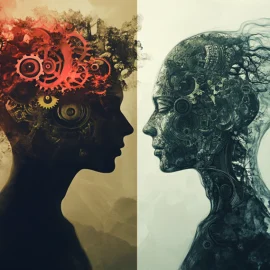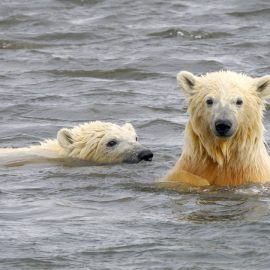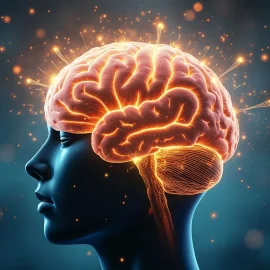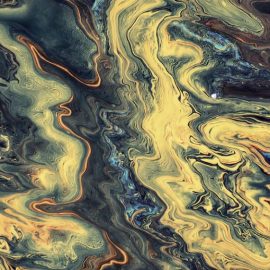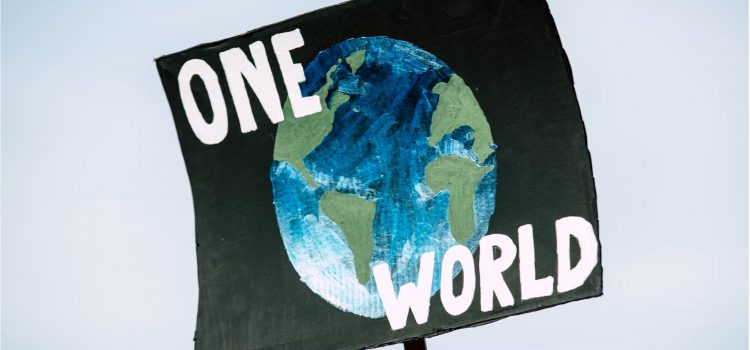
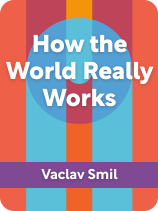
This article is an excerpt from the Shortform book guide to "How the World Really Works" by Vaclav Smil. Shortform has the world's best summaries and analyses of books you should be reading.
Like this article? Sign up for a free trial here.
How does the changing climate impact our water supply? The air we breathe? The food we eat?
In How the World Really Works, Vaclav Smil helps us understand how climate change affects the environment, particularly the aspects of the environment that are required for humans to live. He believes that we’ll be in good shape as long as we take certain measures.
Continue reading to learn how climate change affects oxygen, water, and food.
How Climate Change Affects Oxygen, Water, & Food
There are many aspects of a healthy environment, but Smil focuses on three that are necessary for human life: oxygen, water, and food. Smil believes that we are in no danger of not having enough oxygen, water, or food as a result of climate change—if we eat less beef, manage water more efficiently, reduce food waste, and change our approach to growing crops. He outlines how climate change affects the environment when it comes to these three substances.
(Shortform note: Smil focuses on how climate change will affect these three substances that humanity needs for its basic survival, but he doesn’t address the other ways in which global warming will impact the environment and public health. These effects include rising sea levels due to melting glaciers and ice caps, resulting in coastal flooding; worsened air and water quality resulting in the spread of disease; disruption of habitats that could drive many plant and animal species to extinction; and an increase in the frequency and severity of extreme weather events such as heat waves, droughts, wildfires, and floods.)
Oxygen
Smil notes that we lose a tiny amount of oxygen every year (0.002%) due to burning fossil fuels, but it’s not enough to make a difference. There is no danger of us running out of oxygen, which makes up about 21% of the atmosphere by volume. He says the amount of oxygen in the atmosphere isn’t affected by the number of plants on the planet.
(Shortform note: While the number of plants on the planet doesn’t affect the amount of oxygen we breathe, it does affect the amount of carbon in the atmosphere. During photosynthesis, plants absorb carbon from the atmosphere. Forests in particular are a very effective “carbon sink”: They store more carbon than they release. America’s forests alone sequester over 800 million tons of carbon a year, or approximately 12% of US annual emissions. Accordingly, banning clear-cutting of old-growth forests is one very effective method of curbing atmospheric carbon.)
Water
Smil says that we waste huge amounts of water, and people in many places don’t have enough water to drink. Climate change will cause some water scarcity, but he believes the bigger issue is the increasing demand for water as a result of a growing population. The solution is to reduce water usage, which the US has done successfully.
Desalination plants (which turn salt water into fresh) can provide drinking water, but they’re expensive and can’t produce enough water to meet the volume needed by agriculture.
Global warming increases evaporation, which results in more rain overall—but not in the same places used to getting rain, and not predictably.
(While Smil acknowledges that climate change will create some water scarcity, his focus is on water demand. However, some experts note that demand itself can be adversely impacted by climate change: As temperatures rise and evaporation rates increase, people in many parts of the world may need more water. In addition, climate change results in disappearing glaciers, early snow melt, and severe droughts, which can cause more severe water shortages.)
Food
Producing food uses fossil fuels and also creates additional greenhouse gas emissions as a result of methane emissions from cattle and cutting down forests to raise cattle or grow crops.
Smil explains that we need phosphorus from fertilizers to grow food, but phosphorus runoff, soil erosion, and phosphorus in animal and human waste can contaminate fresh and ocean water, causing large algae growths. Nitrogen runoff also causes these growths. When the algae in ocean water decompose, they consume oxygen, resulting in oxygen-depleted zones where sea life can’t survive.
Despite these issues, Smil contends that we’re in no danger of running out of food as a result of climate change.
(Shortform note: One threat to the global food supply that Smil doesn’t take into account is the increase in natural disasters due to climate change. Extreme weather events such as floods and droughts can wipe out crops and make growing food much less efficient. As Smil notes elsewhere in the book, insurance company records show that natural disasters have been increasing at a rapid rate in the last several decades: They doubled in frequency between 1980 and 2005 and rose 60% between 2005 and 2019. He explains that climate change is partially responsible for this increase because, for example, a warmer atmosphere holds more water and prolonged droughts lead to larger, more intense fires.)

———End of Preview———
Like what you just read? Read the rest of the world's best book summary and analysis of Vaclav Smil's "How the World Really Works" at Shortform.
Here's what you'll find in our full How the World Really Works summary:
- How modern-day life relies heavily on fossil fuels for nearly everything
- Why liberals and conservatives need to better understand how the world works
- Why it's nearly impossible to meet current IPCC limits on global warming

